#Tawang Clash
Text
Tawang clash: China ready to work with India for ‘sound growth’
Tawang clash: China ready to work with India for ‘sound growth’
Tawang clash: China ready to work with India for ‘sound growth’
Source link

View On WordPress
#China#China-India relations#clash#growth#India#India-china clash#ready#sound#Tawang#Tawang clash#work
0 notes
Text
Manish Tewari Slammed S Jaishankar On China Issue Also Mentioned Former Defense Minister Krishna Menon
Manish Tewari Slammed S Jaishankar On China Issue Also Mentioned Former Defense Minister Krishna Menon
Manish Tewari On S Jaishankar: अरुणाचल प्रदेश के तवांग सेक्टर (Tawang Sector) में एलएसी पर भारतीय सैनिकों की 9 दिसंबर को चीनी सैनिकों के साथ झड़प हुई. इस झड़प में दोनों तरफ के कुछ सैनिक घायल हुए. झड़प के बाद चीन के मुद्दे पर विपक्ष ने केंद्र सरकार को निशाने पर लिया. बीते दो दिनों से संसद में भी इस पर हंगामा चल रहा है. वहीं अब कांग्रेस नेता मनीष तिवारी ने चीन के मुद्दे पर विदेश मंत्री एस जयशंकर को…

View On WordPress
#India China Clash#India China Face Off#India China Stand Off#Manish Tewari News#Manish Tewari S Jaishankar#Manish Tewari Tawang Clash#Manish Tewari Twitter#Tawang Clash#तवांग में हिंसक झड़प#भारत चीन फेस ऑफ#भारत चीन विवाद#भारत चीन संघर्ष#मनीष तिवारी एस जयशंकर#मनीष तिवारी ट्विटर#मनीष तिवारी तवांग झड़प#मनीष तिवारी न्यूज
0 notes
Text
Rajnath Singh, India-China Clash in Tawang: चिनी अतिक्रमणाचा डाव भारतीय जवानांनी उधळून लावला, एकाचाही मृत्यू नाही!
Rajnath Singh, India-China Clash in Tawang: चिनी अतिक्रमणाचा डाव भारतीय जवानांनी उधळून लावला, एकाचाही मृत्यू नाही!
Rajnath Singh, India-China Clash in Tawang: चिनी अतिक्रमणाचा डाव भारतीय जवानांनी उधळून लावला, एकाचाही मृत्यू नाही!
संरक्षण मंत्री राजनाथ सिंहांनी लोकसभेत दिलं उत्तर
Go to Source
View On WordPress
#clash:#india-china#rajnath#singh:#tawang:#अतिक्रमणाचा#उधळून#एकाचाही#चिनी#जवानांनी#डाव#नाही#बातम्या#भारतीय#मृत्यू#लावला
0 notes
Text
India says it has lodged a "strong protest" with China over a new map that lays claim to its territory.
Indian media have reported that the map shows the north-eastern state of Arunachal Pradesh and the disputed Aksai Chin plateau as China's territory.
It was released by China's ministry of natural resources on Monday.
"We reject these claims as they have no basis," India's foreign ministry spokesperson Arindam Bagchi said.
He added that such steps by China "only complicate the resolution of the boundary question".
Beijing has not officially responded yet.
India's Foreign Minister S Jaishankar also called China's claim "absurd".
"China has even in the past put out maps which claim the territories which are not China's, which belong to other countries. This is an old habit of theirs," he told TV channel NDTV on Tuesday.
India's protest comes days after Prime Minister Narendra Modi and Chinese President Xi Jinping spoke on the sidelines of the Brics summit in South Africa. An Indian official said afterwards that the two countries had agreed to "intensify efforts at expeditious disengagement and de-escalation" along the disputed border.
Shadow of 60-year-old war at India-China flashpoint
The Indian monastery town coveted by China
India has often reacted angrily to China's attempts to stake claim to its territory.
The source of the tension between the neighbours is a disputed 3,440km (2,100 mile)-long de facto border along the Himalayas - called the Line of Actual Control, or LAC - which is poorly demarcated. The presence of rivers, lakes and snowcaps means the line can shift in places.
Soldiers on either side come face to face at many points, which can spark tensions - the last time being in December when Indian and Chinese troops clashed along the border in the town of Tawang.
China says it considers the whole of Arunachal Pradesh its territory, calling it "South Tibet" - a claim India firmly rejects. India claims the Aksai Chin plateau in the Himalayas, which is controlled by China.
In April, Delhi reacted sharply to China's attempts to rename 11 places in Arunachal Pradesh, saying the state would always be "an "integral and inalienable part of India".
Relations between India and China have worsened since 2020, when their troops were involved in a deadly clash at the Galwan valley in Ladakh - it was the first fatal confrontation between the two sides since 1975.
8 notes
·
View notes
Text
Indian and Chinese troops clash on disputed border | CNN
Indian and Chinese troops clash on disputed border | CNN
New Delhi
CNN
—
Indian and Chinese troops have clashed on their disputed Himalayan border, the first known incident between the two nuclear-armed Asian powers in nearly two years.
In a statement, India’s Ministry of Defense said soldiers from both sides sustained minor injuries in the face-off, which took place Friday in the Tawang Sector in India’s northeastern territory of Arunachal…
View On WordPress
1 note
·
View note
Text
China Skips Confidential G20 Meet In Arunachal: Sources
Over 50 delegates attended the meeting, which is among the dozens of events planned across 50 major cities ahead of the G20 summit in Delhi in September.

New Delhi/Guwahati: China skipped a confidential G20 meeting held in India on Sunday, sources said. The meeting was held in Itanagar, the capital city of Arunachal Pradesh, a northeastern state that China claims is a part of Tibet. India has rejected such claims in the past and maintains Arunachal is its integral part.
Over 50 delegates attended the meeting, which is among the dozens of events planned across 50 major cities ahead of the G20 summit in Delhi in September. India currently holds the G20 presidency.
It is unclear if China has officially lodged a protest with India over the meeting.
Neither Foreign ministry nor China has commented on it.
The weekend meeting was declared confidential and media coverage was not permitted.
Themed 'Research innovation initiative, gathering', the meeting was organised by the Science and Technology department.
The delegates who attended the meet also visited Arunachal Pradesh legislative assembly and a Buddhist monastery in Itanagar. Upon their arrival, they were received by cultural troupes at the airport. They also tasted local cuisines, said officials.
India and Chinese troops had clashed along the Line of Actual Control (LAC) in the state's Tawang sector last December, in a face-off that came amid a months-long border standoff in eastern Ladakh.
Defence Minister Rajnath Singh had then accused China of trying to "unilaterally" change the status quo along the LAC.
0 notes
Video
youtube
U.S. military gave India the edge in Tawang clash with China? ‘PLA Caugh...
0 notes
Text
Explained | The escalation on the India-China border
Explained | The escalation on the India-China border
The story so far: On December 9, 2022, Indian and Chinese troops clashed in the Yangtse area in the Tawang region along the India-China border. The confrontation in Tawang was the most serious skirmish between the two sides since the Galwan Valley clash in 2020. The Australian Strategic Policy Institute (ASPI) has found that the skirmish that took place in December was aided by new road…
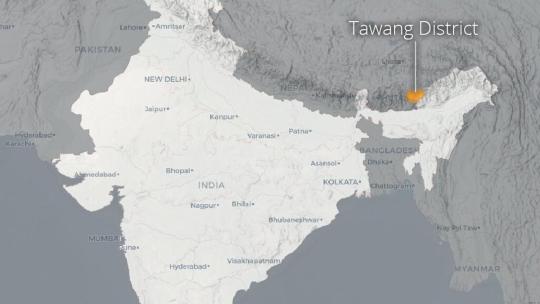
View On WordPress
0 notes
Text
'China stands ready to...': Beijing tells India days after Tawang clashes | India News
‘China stands ready to…’: Beijing tells India days after Tawang clashes | India News
Tawang: After the India-China face off on December 9 at the Arunachal Pradesh Tawang sector, the Ministry of External Affairs (MEA) stated that India and China held the 17th round of Corps Commander Level Meeting and agreed to maintain the security and stability on the ground in the Western Sector. As a result, Chinese Foreign Minister Wang Yi today said that China is ready to work with India…
View On WordPress
0 notes
Text
In the early hours of Dec. 9, a few hundred Chinese soldiers armed with batons, spikes, and other primitive weapons tried to dislodge an Indian Army outpost on a ridge on the disputed border between India’s easternmost state, Arunachal Pradesh, and Tibet, which is governed by China. The Indian Army warded off the attackers, but the clash was fierce, injuring 34 Indian soldiers.
New Delhi blamed Beijing for trying to “unilaterally change the status quo,” while the Chinese People’s Liberation Army (PLA) said it was conducting a regular patrol when its troops were “blocked by the Indian Army illegally crossing” the border, known as the Line of Actual Control (LAC). Two days later, local military commanders from both sides agreed to a disengagement that prevents an eyeball-to-eyeball confrontation at the ridge, near the edge of the Yangtse plateau. Still, Chinese and Indian soldiers remain separated by just 500 feet.
This month’s clash is not a one-off. Arunachal Pradesh has been the site of regular skirmishes in recent months, even as tensions remain high in the Ladakh region on the western section of the China-India border. Chinese provocations in the east reflect a breakdown of Indian deterrence. New Delhi’s trade with Beijing has increased, diplomatic ties have remained normal, and India has not undertaken local military operations. Indian Prime Minister Narendra Modi’s reputation for toughness and resolve—essential for deterrence—has been tested and found wanting.
Modi is trapped by his own nationalist rhetoric: Since deadly border clashes in Ladakh in 2020, India’s government has downplayed the border crisis to shield the prime minister’s macho image. China has been quick to exploit this weakness, which has likely emboldened it to put even more pressure on India. This shift has far-reaching consequences for New Delhi’s foreign policy, chief among them how it approaches its partnership with Washington. India fears being boxed into an alliance, but it can no longer wish away the Chinese threat.
The Yangtse plateau lies in India’s Tawang district, which is claimed by China. The sixth Dalai Lama was born in Tawang in the 17th century, and the district is home to the second-largest Tibetan Buddhist monastery in the world. Dai Bingguo, a Chinese diplomat who led border negotiations with India for a decade, argued in a 2017 interview that the territory that includes Tawang is “inalienable from China’s Tibet.” “Even the British colonialists who drew the illegal ‘McMahon Line’ respected China’s jurisdiction over Tawang,” he said.
The McMahon Line, although not formally accepted by the Chinese, serves as the de facto border between Arunachal Pradesh and Tibet. Henry McMahon, the British foreign secretary of colonial India, drew the line on a map with a thick red pen in 1914 during negotiations over the status of Tibet. In some places, the line violates its own principle of following the highest watershed, creating discrepancies on the ground. Yangtse is one such area of dispute, as established during border talks in the 1990s.
India first occupied the area in 1986, during the seven-year Sumdorung Chu crisis with China—a major standoff over the Yangtse plateau. It’s understandable why the PLA wants to control the 17,000-foot ridge, as military commanders agree on its tactical importance. It offers an unrestricted view of the entire Tawang Valley and Bum La pass, providing a tactical advantage. A Chinese military patrol was pushed back by India there as recently as October 2021; this year, the PLA sealed a road and constructed a camp around 500 feet short of the ridge.
Other reports suggest that clashes such as the one on Dec. 9 have taken place in Arunachal Pradesh two or three times a month on average recently, and that the Indian government has succeeded at keeping the incidents largely under wraps until now. Indian media reports that since the start of summer, the PLA has been “overtly aggressive” at the border with Arunachal Pradesh. Likewise, in the Doklam plateau in Bhutan, the site of a 73-day standoff over a Chinese construction project in 2017, the PLA has built a new bridge.
These Chinese grey zone operations—falling below the threshold of war—have gone on while tensions between the two armies in Ladakh remain high. There, each side still deploys more than 50,000 additional soldiers, Indian soldiers can’t access areas they patrolled in 2020, and border talks have failed to provide a breakthrough. If the PLA can try to dislodge India from a place like Yangtse, where New Delhi has deployed for decades, then it surely can target any place on the LAC at its will. Effective deterrence is a function of visible capacity to inflict unacceptable damage—whether military, economic, or diplomatic. The situation as it stands reflects India’s increasing inability to deter China on the disputed border.
Since the Ladakh crisis began, trade between India and China has reached record highs. India is the biggest recipient of grants from the Beijing-based Asian Infrastructure Investment Bank. This economic entanglement has further diminished India’s deterrence. Meanwhile, New Delhi has taken few diplomatic steps to dissuade Beijing from incursions. In addition to attending multilateral summits hosted by China and inviting Chinese delegations to India, the Indian military has participated with the PLA in joint exercises. New Delhi has not undertaken any quid pro quo military operations to take control of Chinese territory on the border, which it could use as a bargaining chip to reverse Beijing’s ingresses in Ladakh.
Despite these realities, around 70 percent of Indians now believe the country could defeat China militarily. Modi has avoided any public conversation about China’s border threat. After the Galwan Valley clashes, which killed 20 Indian soldiers, the prime minister said on national television that “no one has intruded into our territory.” In Beijing’s view, New Delhi is reluctant to acknowledge any aggressive Chinese actions to prevent embarrassment to Modi, and hesitant to follow through threats out of fear of further escalation.
Modi’s brief exchange with Chinese President Xi Jinping at this year’s G-20 summit also failed to yield any result in the border dispute. Vijay Gokhale, who previously served as India’s foreign secretary and ambassador to Beijing, recently recommended that India should “convey signals more credibly and transparently.” In Gokhale’s words, the Modi government’s current actions corroborate Beijing’s long-held vision of New Delhi as “unequal as well as untrustworthy.”
The ongoing tensions at the India-China border inevitably shape Modi’s foreign policy. India has so far continued to pursue relationships with regimes shunned by the West, despite U.S. President Joe Biden calling ties with India the “the most important relationship for the United States, into the 21st century.” Before the war in Ukraine, India imported less than 1 percent of its crude oil from Russia; now more than 20 percent of its crude supplies come from Russia. India is collaborating with Iran on an infrastructure project to shorten the supply lines from Russia and engages with the military junta in Myanmar.
Aiming for a multipolar world, New Delhi has rarely backed the West at multilateral forums, but it hasn’t voted with Russia either. India simultaneously wants be part of the global south and have a seat at the global north’s table. But New Delhi can only pursue this independent course if it has the freedom to maneuver. Instead, its immediate and proximate challenge has become its biggest concern, forcing it to view all its foreign-policy choices through that prism. China has compelled India to reconsider choices that it has so far sidestepped, including a closer security and intelligence partnership with the United States and its allies.
The most important decision India currently faces is whether to officially join forces with the United States to counter China. Most observers see the Quadrilateral Security Dialogue, known as the Quad (comprising Australia, India, Japan, and the United States), as a potential showcase for that cooperation. Kurt Campbell, the White House Indo-Pacific czar, recently revealed that New Delhi was reluctant to have the Quad hold a leaders’ summit. When the United States explored whether the Quad could develop military teeth, the Indian side restated its discomfort.
More than three years after the United States agreed to have Indian liaison officers at the Indo-Pacific Command and Special Operations Command, the Indian government has not yet nominated one. New Delhi has not responded enthusiastically to the Australian Navy’s request to send an Indian submarine to dock in Perth, Australia; Japan also speaks in whispered tones about the depth or lack thereof of India’s commitment to regional security, including over Taiwan.
Ultimately, New Delhi’s reluctance to fully commit to an anti-China security partnership also reflects its apprehension about provoking Beijing. It is the only member of the Quad that shares a land border with China and recognizes that it must deal with a continental security challenge from China on its own; the United States would not take a risk over Tawang. Nevertheless, Beijing continues to view New Delhi through the prism of its ties with Washington. It does not wish to grant India the status of a regional power to be dealt on its own terms.
The Dec. 9 clash at Tawang underlines again that India cannot escape the Chinese threat on its border. The government’s tactic of staying silent until the crisis blows over has only made the Chinese more belligerent. Since the latest clash followed Modi’s personal overture to Xi, it should be evident that the prime minister’s personality-driven diplomacy has failed. Modi has turned national energy to focus on event management around India’s G-20 presidency next year, but that won’t diminish China’s intimidating stance either.
The status quo has changed, deterrence has broken down, and Beijing’s threat looms larger by the day. Sooner or later, India will have to take more decisive action.
0 notes
Text
मोदी मीटिंग में आए, 3 मिनट तक BJP मेंबर्स ने बजाईं तालियां; गुजरात जीत पर स्वागत | Parliament Protest Update; Rajnath Singh| China India Dispute | Mallikarjun kharge| tawang clash
मोदी मीटिंग में आए, 3 मिनट तक BJP मेंबर्स ने बजाईं तालियां; गुजरात जीत पर स्वागत | Parliament Protest Update; Rajnath Singh| China India Dispute | Mallikarjun kharge| tawang clash
Hindi News
National
Parliament Protest Update; Rajnath Singh| China India Dispute | Mallikarjun Kharge| Tawang Clash
नई दिल्ली8 मिनट पहले
भाजपा की संसदीय दल के लिए PM मोदी संसद भवन परिसर पहुंचे। यहां उनका ताली बजाकर स्वागत हुआ।
संसद की विंटर सेशन में बुधवार को भी तवांग का ही मुद्दा गूंजेगा। प्रधानमंत्री नरेंद्र मोदी, गृह मंत्री अमित शाह और रक्षा मंत्री राजनाथ सिंह ने कार्यवाही शुरू होने से पहले…

View On WordPress
#China#Defense minister#india#LAC Clash#Lok Sabha#Mallikarjun Kharge#Parliament#Rajnath Singh#Rajya Sabha#Tawang Sector
0 notes
Text
India provocations will not go unanswered,China is ready for a clash of titans.
The post is machine translated
The translation is at the bottom
The collective is on telegram
⚠️ L'ESERCITO POPOLARE DI LIBERAZIONE HA DISPIEGATO CACCIA MULTIRUOLO E DRONI DA RICOGNIZIONE PRESSO BASI AEREE VICINO AL CONFINE CON L'INDIA ⚠️
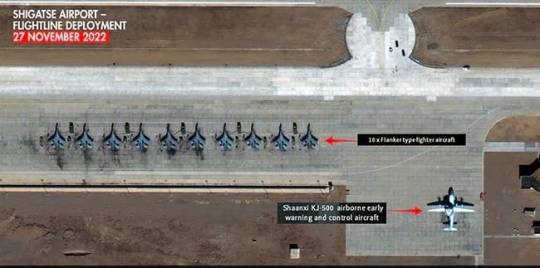



🇨🇳|🇮🇳 Dopo lo "Scontro del 9 Dicembre" a Dáwàng Zhèn tra le Forze Armate dell'India e l'Esercito Popolare di Liberazione, è stato notato - tramite immagini satellitari - il dispiegamento di UAV ed Aerei dell'EPL negli Aeroporti e nelle Basi Aeree della Regina Autonoma del Tibet
✈️ Dall'11 dicembre, presso la Base Aerea di Shigatse, si possono notare:
➖ 10 Caccia Multiruolo J-16 - [FOTO 1]
➖ Almeno 1 Aereo da Sorveglianza e Controllo Aviotrasportato KJ-500 - [FOTO 1]
✈️ Alla Base Aerea di Bangda - che dista 150km dall'Arunachal Pradesh - si possono notare:
➖ 1 UAV da Ricognizione WZ-7 - [FOTO 2]
➖ 1 UAV da Ricognizione e da Combattimento CH-4B - [FOTO 3]
➖ 2 Caccia Multiruolo J-16 [FOTO 4]
🐲 La messa in servizio del WZ-7 e del CH-4B - nonché il loro uso operativo - indicano che è stato creato con successo un ambiente perfettamente funzionante per supportare missioni speciali nella Regione dell'Aksai Chin 🔥
💭 Tali immagini dalla Base Aerea di Bangda sono apparse il giorno prima delle esercitazioni dell'Aeronautica Indiana al confine con la Cina, ciò significa che il Partito Comunista Cinese - tramite le sue Agenzie di Intelligence - era a conoscenza dei piani dell'India, e si è dunque - intelligentemente - preparato in anticipo per seguire le tattiche dell'Aeronautica Indiana, osservando e studiando i movimenti dell'India per effettuare operazioni di contrasto nell'ambito di un conflitto ⚔️
🇨🇳 Ciò significa che l'infrastruttura militare creata negli ultimi mesi - aeroporti, eliporti, sistemi di difesa area, linee di comunicazione - ha permesso e permetterà all'Esercito Popolare di Liberazione di dispiegare rapidamente forze e mezzi qualora la situazione con l'India si aggravasse.
🌸 Iscriviti 👉 @collettivoshaoshan
⚠️ THE PEOPLE'S LIBERATION ARMY DEPLOYED MULTI-ROLE FIGHTERS AND SCAN DRONES AT AIR BASES NEAR THE INDIA BORDER ⚠️
🇨🇳|🇮🇳 After the "December 9th Clash" in Dáwàng Zhèn between the Armed Forces of India and the People's Liberation Army, it was noted - via satellite images - the deployment of PLA UAVs and Aircraft at the Airports and in the Tibet Autonomous Queen Air Bases
✈️ Since December 11, at Shigatse Air Base, you can see:
➖ 10 J-16 Multirole Fighters - [PHOTO 1]
➖ At least 1 Airborne Surveillance and Control Aircraft KJ-500 - [PHOTO 1]
✈️ At the Bangda Air Base - which is 150km away from Arunachal Pradesh - you can see:
➖ 1 WZ-7 Reconnaissance UAV - [PHOTO 2]
➖ 1 CH-4B Reconnaissance and Combat UAV - [PHOTO 3]
➖ 2 J-16 Multirole Fighter [PHOTO 4]
🐲 The commissioning of the WZ-7 and CH-4B - as well as their operational use - indicate that a fully functional environment has been successfully created to support special missions in the Aksai Chin Region 🔥
💭 Such images from Bangda Air Base appeared the day before the Indian Air Force exercises on the border with China, this means that the Communist Party of China - through its Intelligence Agencies - was aware of India's plans, and he therefore - intelligently - prepared in advance to follow the tactics of the Indian Air Force, observing and studying India's movements to carry out contrast operations in the context of a conflict ⚔️
🇨🇳 This means that the military infrastructure created in recent months - airports, heliports, air defense systems, communication lines - has allowed and will allow the People's Liberation Army to rapidly deploy forces and means should the situation with India got worse.
🌸 Subscribe 👉 @collettivoshaoshan
#socialism#china#italian#translated#china news#communism#collettivoshaoshan#western imperialism#india army#indian border#india news#politics#diplomacy#war#border conflict#china army#people liberation army#pla#marxist#marxist leninist#marxism leninism#marxism
0 notes
Text
China witnesses surge in Covid cases, crematoriums full, hospitals flooded with patients
China witnesses surge in Covid cases, crematoriums full, hospitals flooded with patients
A massive political war has erupted over Congress leader Rahul Gandhi’s remarks on the Army. External Affairs Minister S Jaishankar strongly objected to the use of the word ‘pitai’ by Rahul Gandhi while referring to the India-China clash in Tawang, and asserted that our soldiers have stood their ground in Yangtse in Arunachal Pradesh and should be “appreciated and honoured”.
Source link
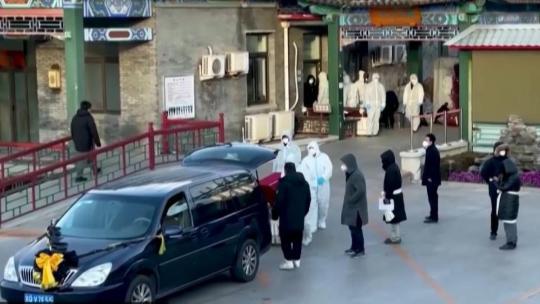
View On WordPress
0 notes
Text
China and India: Nuclear-Armed Nations Clash
China and India: Nuclear-Armed Nations Clash
China and India: Nuclear-Armed Nations Clash—With Sticks and Stones
By Jeremiah Jacques • December 15, 2022
Chinese and Indian troops clashed at a location on their disputed border in the Himalayas, the Indian Defense Ministry announced on December 13. The violence erupted by the Tawang sector of India’s Arunachal Pradesh state four days before the announcement and resulted in numerous injuries…
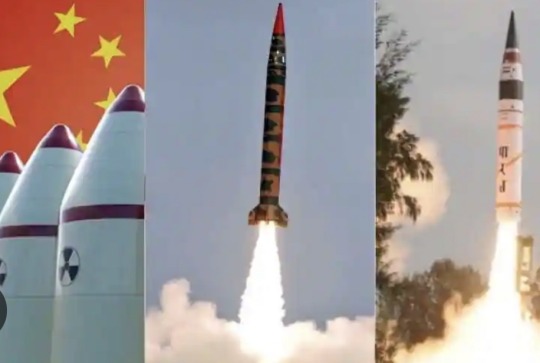
View On WordPress
0 notes
Text
USA Reacts to India - China Border Clash In Arunachal Pradesh
USA Reacts to India- China Border Clash In Arunachal Pradesh #borderdispute #china #india
The India-China border had a clash recently where people were hurt during the face-off. People faced minor injuries on Friday in Arunachal Pradesh. Personals were hurt from both sides.
The USA reacted to the clash
The white house administered by the Biden government, USA reacted to the India-China border clash. They said that India and China should quickly disengage from the clash in the Tawang…
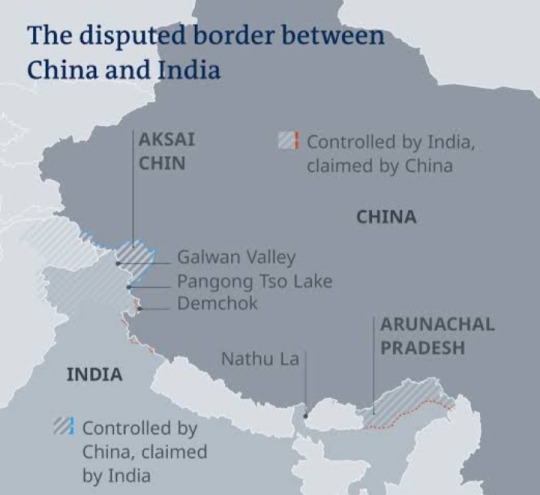
View On WordPress
0 notes
Text
‘Indian Army Would Rather Open Fire Than…’: General Naravane Warns Chinese Troops
Former chief of army staff general MM Naravane asked if the Chinese Army (People's Liberation Army) has gone down to the level of "prehistoric times" by using “clubs and barbed wires”.
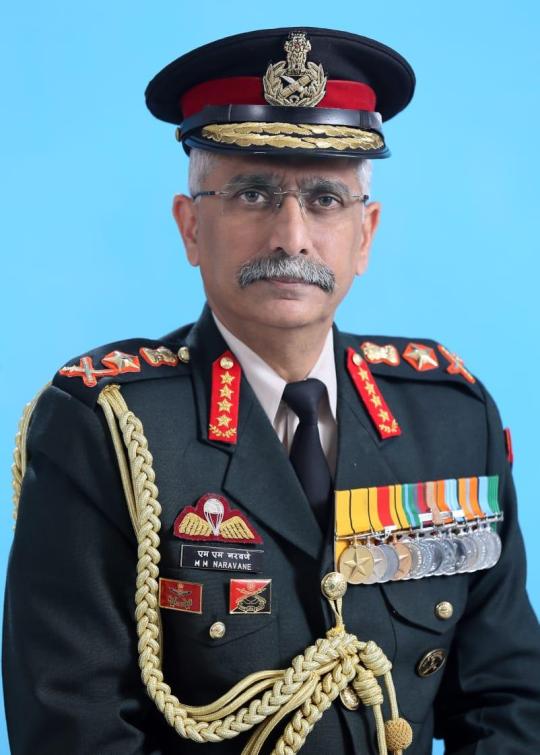
Former chief of army staff general MM Naravane, days after the Arunachal Pradesh clash, has hit out at the Chinese Army for using clubs and barbed wires during the skirmish and warned that the Indian Army would rather open fire than resort to “wielding clubs”, news agency ANI reported.
“We would still like to maintain that we are a 21st-century army. To start going back to clubs and barbed wires is going back to prehistoric times. It is a very regressive way of going. We would still like to maintain that in warfare also there are certain rules. It is not that you do whatever you want to do. We would still like to maintain a professional stance. Therefore, rather than resort to wielding clubs, we rather open fire,” Naravane said in a 'Podcast with Smita Prakash'.
Naravane asked if the Chinese Army (People's Liberation Army) has gone down to the level of "prehistoric times" by using “clubs and barbed wires”.
“That is how an army fights by using the weapons at your disposal and not getting into fisticuffs. Are we hooligans or mafia? We are professional. Is that the level PLA has gone down to? Hooliganism and streetfighting?” he asked
The former Indian Army chief's remarks come days after the Chinese Army attempted to change the status quo on the Line of Actual Control or LAC in the Tawang sector of Arunachal Pradesh on December 9 through a face-off with the Indian troops, in which they were pushed back by the Indian Army without suffering any casualties.
"On one side they try to show their technological prowess, on the other side they are coming with barbed wire clubs. It is ridiculous," Naravane said.
Talking about the Galwan valley clash in 2020 in which 20 Indian soldiers lost their lives and several Chinese soldiers were also killed, Naravane said that the Indian Army countered them in the same way that was used against it.Read More On..
0 notes